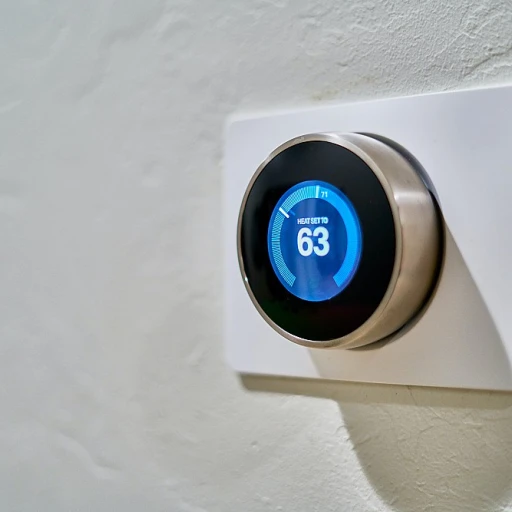
Understanding PWM Dimming
Decoding the Basics of Pulse Width Modulation
Pulse Width Modulation (PWM) is an essential technique frequently utilized in luxury tech gadgets to attain precise lighting and display control. At its core, PWM involves the modulation of power delivered to a device using a series of high-frequency pulses. Each pulse comes with a variable width, known as the pulse width, dictating the average voltage or power impacted on components such as LED drivers.
Understanding PWM dimming starts with the concept of the duty cycle. It’s the ratio of the time the signal is on compared to the entire cycle time. By adjusting the duty cycle, PWM effectively manages the brightness levels of LED lights, influencing how bright or dim a screen can appear. Achieving this level of control is critical for maintaining the display standards expected from high-end gadgets.
PWM signals operate at high frequency, often in the range of tens of kilohertz. This facilitates a flicker-free experience, critical for the comfort of end-users. Devices with dimming LED technology often outperform those using analog dimming, especially in high-definition displays and modern LED lighting systems.
In luxury gadgets, PWM dimming isn’t just about altering brightness; it’s fundamental in providing a superior visual experience. Yet, it’s not without its challenges. As we explore more about PWM’s role in luxury gadgets, we’ll delve into its benefits, potential challenges, and exciting innovations that promise to redefine how we perceive digital displays. For instance, if you’re interested in elevating your streaming experience, check out how premium soundboards can complement your visual setup on Luxury Geek.
The Role of PWM Dimming in Luxury Gadgets
The Role of Advanced Dimming Techniques
In the realm of luxury tech gadgets, achieving superior display quality often relies on sophisticated dimming methods like Pulse Width Modulation (PWM) dimming. Known for its ability to manage LED brightness levels efficiently, PWM dimming is integral to high-end devices seeking to offer impeccable visual experiences.
PWM dimming functions by modulating a series of electronic pulses to control the electrical current supplied to LEDs. This process entails adjusting the pulse width to influence the duty cycle, thereby altering the intensity of the light emitted without impacting the color quality. With PWM signals operating at high frequencies, fluctuations in brightness are minimized, resulting in virtually flicker-free displays.
The precision of dimming control achievable with PWM makes it a preferred solution in high-resolution displays where consistent brightness levels are crucial. Luxury gadgets, which demand clarity and precision in visuals, leverage PWM dimming to regulate the LED lighting systems seamlessly. This ensures an optimal balance between power efficiency and lighting quality, essential for maintaining the overall luxury feel of the device.
Moreover, high-end devices often deploy advanced LED drivers, designed to handle the rapid switching involved in PWM dimming, thus preventing any potential issues related to flicker or uneven brightness. The role of PWM dimming extends beyond just brightness control; it also contributes to prolonging the lifespan of LED lights by preventing excessive heat build-up from constant current flow.
For tech enthusiasts seeking to elevate their sound experience, it's evident that the sophistication of PWM dimming technology not only enhances display quality but also fortifies the premium experience offered by luxury tech gadgets.
Benefits of PWM Dimming for High-End Displays
Advantages of Pulse Width Modulation in Luxurious Displays
In the pursuit of delivering unparalleled viewing experiences, luxury tech gadgets are increasingly turning to PWM dimming for their high-end display solutions. The technology offers precise control over brightness levels by adjusting the duty cycle of the PWM signal. This modulation ensures that even subtle variations in light intensity can be achieved, allowing for a richer visual depth in LED lighting systems.
The sophistication of PWM lies in its ability to maintain a flicker free display by operating at a high frequency, effectively minimizing the perceptible flicker that can strain the eyes. This is achieved by modulating the light's duty cycle, ensuring a consistently smooth lighting experience.
Moreover, utilizing PWM dimming allows luxury gadgets to reduce their power consumption without sacrificing display quality. By adjusting the pulse width of the PWM signal, these devices can efficiently control the output of LED lights while preserving energy, thereby extending the lifespan of the LEDs and contributing to eco-friendly operation.
Furthermore, implementing PWM with an appropriate led driver can lead to improvements in color accuracy and contrast ratios. PWM's modulation of the current allows for finer adjustments of the voltage level, thus achieving superior display attributes that meet the expectations of discerning luxury consumers.
As these advanced displays continue to evolve, embracing the possibilities of PWM dimming ensures that luxury tech retains its status at the forefront of impeccable visual performance. For more insights on creating supreme tech experiences, explore our latest post on luxurious audio innovations.
Challenges and Considerations
Balancing Brightness and Flicker
When it comes to incorporating pulse width modulation (PWM) in luxury tech gadgets, challenges in achieving seamless dimming exist. Navigating these challenges is essential for manufacturers aiming to deliver premium display quality without compromise. One of the primary concerns with PWM dimming is the risk of flicker. Flicker can occur when the PWM frequency is not sufficiently high, resulting in a perceivable fluctuation in light intensity for users.
Ensuring a flicker-free experience necessitates a high frequency PWM signal, which modulates the current flowing through LED lights effectively. This means the duty cycle must be optimized to ensure that the brightness levels remain constant and pleasing to the eye, without rapid changes in brightness or noticeable pulse effects.
A further challenge lies in the design of LED drivers that control PWM and deliver consistent performance across varying brightness and power demands. These drivers must be adept at handling high voltage and optimizing power consumption, all while maintaining superior lighting control.
Moreover, maintaining the right balance between modulation, PWM output, and LED driver design, while minimizing flicker and maximizing efficiency, represents a continuous design consideration. As luxury tech manufacturers push forward in innovating display technology, they must address these concerns to meet discerning consumer standards for seamless and sophisticated LED lighting systems.
Innovations in PWM Dimming Technology
Innovative Approaches in PWM Dimming
In the realm of luxury tech gadgets, innovation is a constant pursuit. PWM dimming technology is no exception, as it continues to evolve to meet the demands of high-end displays. The focus is on enhancing the user experience by providing superior control over brightness levels while minimizing flicker and maximizing efficiency.
One of the key advancements in PWM dimming is the development of high-frequency PWM signals. By increasing the frequency of the PWM signal, manufacturers can reduce flicker to imperceptible levels, creating a flicker-free experience that is crucial for prolonged use. This is particularly important in luxury gadgets where display quality is paramount.
Another area of innovation is the integration of advanced LED drivers. These components are designed to provide constant current to LED lights, ensuring consistent brightness and color accuracy. The use of sophisticated LED drivers allows for precise control over the duty cycle and pulse width, resulting in smoother transitions and more accurate dimming.
Moreover, the trend towards analog dimming is gaining traction. While PWM dimming relies on digital signals to control brightness, analog dimming offers a more seamless experience by adjusting the voltage level directly. This approach can complement PWM dimming by providing an additional layer of control, especially in scenarios where subtle changes in lighting are desired.
As luxury tech gadgets continue to push the boundaries of display technology, the role of PWM dimming will only become more significant. The ongoing innovations in this field promise to deliver even more refined and sophisticated lighting systems, ensuring that high-end devices remain at the forefront of visual excellence.











